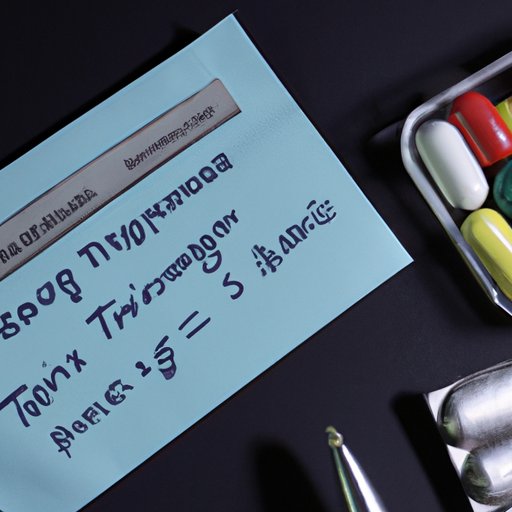
Introduction
For many travelers, flying can be a daunting experience, especially for those who are carrying medications with them. Whether you’re taking prescription drugs or over-the-counter medicines, it’s important to understand the processes involved in taking medication on a plane. In this article, we’ll explore the ins and outs of air travel with medications, offering tips and guidelines to help you navigate the process with ease.
Navigating Air Travel with Medications: What You Need to Know
Before taking any medication on a plane, it’s important to check with your doctor and the Transportation Security Administration (TSA) first. It’s also essential to carry medications in their original prescription bottles, with the label identifying the medication clearly visible. Additionally, travelers should only bring the amount of medication needed for the duration of their trip and avoid packing medication in checked luggage.
When it comes to prescription medication, travelers should carry a copy of the prescription to ensure easy identification. Over-the-counter medications are generally allowed in both carry-on and checked luggage, but it’s important to research individual medications to be sure.
Flying with Medications: Tips and Guidelines from TSA
The TSA offers a comprehensive list of guidelines for travelers carrying medication. The agency requires that all medication be screened regardless of its form or packaging, but it’s typically allowed in both carry-on and checked luggage.
Carriers, however, may have different requirements for traveling with medication, and it’s important to check with the airline about any specific rules before booking a flight. Additionally, liquid medication in excess of 3.4 ounces is subject to additional screening procedures, and the traveler should declare any liquids upon arrival at the airport.
Avoiding Mishaps: A Guide to Medication Transport during Flight
Proper packing procedures can help ensure that medication is safe and secure during air travel. Experts suggest storing medication in a clear, plastic bag to help TSA agents quickly identify the medication during screenings. Additionally, it’s important to pack medication in sturdy containers that can withstand changes in air pressure and the possibility of rough handling.
Travelers carrying injectable medications should seek advice from their doctor before travel, as guidelines for transporting syringes and needles can vary by country. To avoid breakage or damage to medication, it’s recommended to carry medication in your carry-on, as checked luggage often undergoes more tumultuous handling.
Taking Prescriptions on a Plane: Dos and Don’ts
Travelers with prescription medication should double-check to make sure that their medication is legal in the countries they will be visiting. Codeine, for example, is illegal in some countries and travelers carrying medication with codeine may be subject to legal issues during their trip.
If a prescription medication looks suspicious, travelers may be asked to provide a doctor’s note or prescription label as proof of their medication. It’s important to carry these documents with you, particularly for international travel where laws can differ.
If medication is lost or stolen during travel, travelers should contact their doctor to arrange for a replacement prescription. Travelers should not take medication from any unfamiliar source, as this could be dangerous.
Preparing for Takeoff: Packing Medications for Air Travel
To ensure medications are safe and secure during air travel, it’s important to pack them correctly. Some important tips include:
- Carry medication in the original prescription bottle
- Ensure any liquid medication is packed separately from other carry-on items
- Pack medication in a clear bag for easy identification during security screenings
- Store medication in a cool, dry area unless the medication requires refrigeration
- If traveling internationally, bring along documentation or a letter from your doctor if your medication requires it
When going through customs and border protection checkpoints, it’s important to be honest and clear about any medication you are carrying. When in doubt, it’s always best to declare your medication in order to avoid problems and ensure the security of other passengers.
Conclusion
Traveling with medication can be stressful for many, but following these guidelines can help mitigate concerns and ensure safe transport. Always check with your doctor and the TSA before traveling with medication, and be sure to pack medication properly to avoid any breakage or damage. Remember to carry documentation and prescription labels for any prescription medication you bring on a plane, and declare any medication when going through customs. By taking precautions, you can keep yourself and your medication safe while traveling the world.





